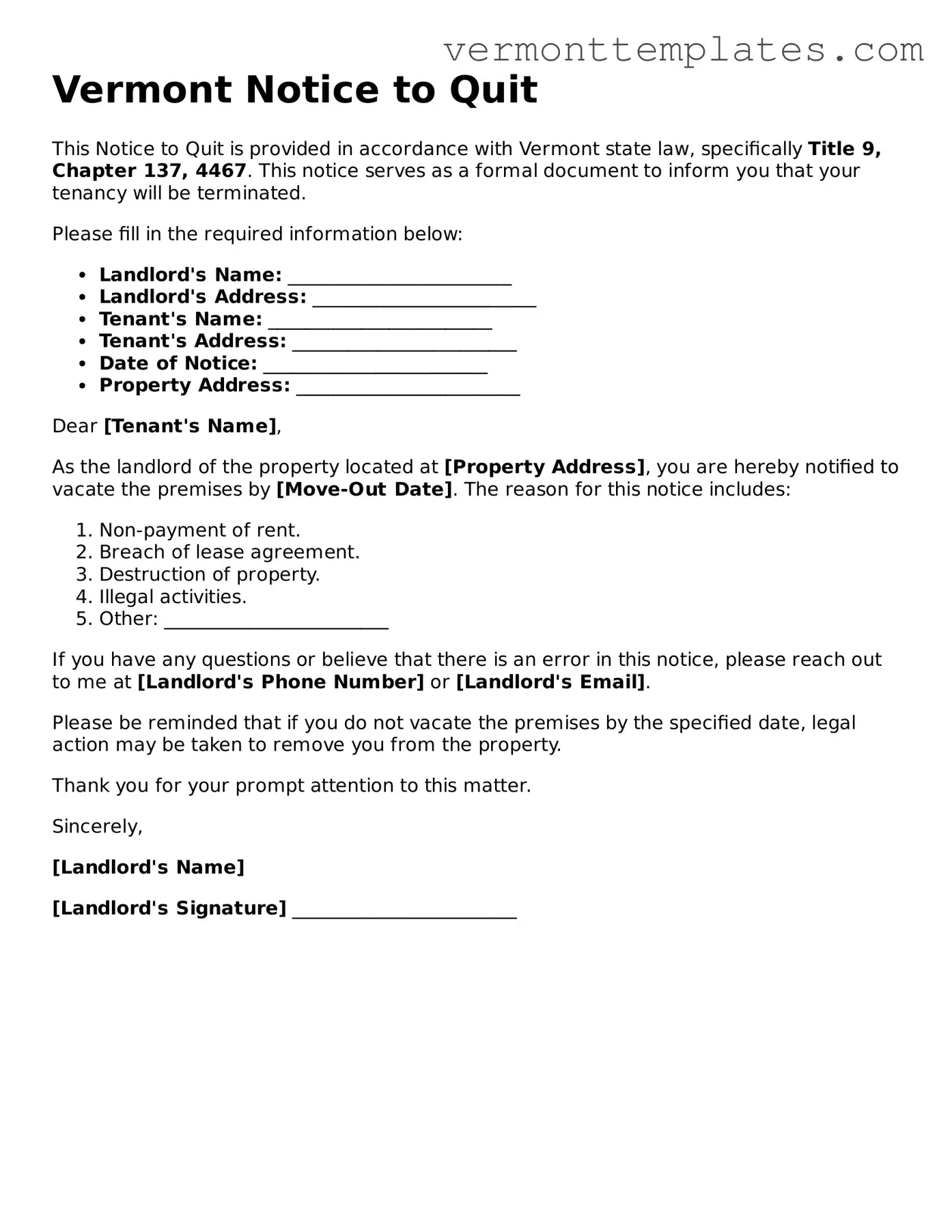Vermont Notice to Quit
This Notice to Quit is provided in accordance with Vermont state law, specifically Title 9, Chapter 137, 4467. This notice serves as a formal document to inform you that your tenancy will be terminated.
Please fill in the required information below:
- Landlord's Name: ________________________
- Landlord's Address: ________________________
- Tenant's Name: ________________________
- Tenant's Address: ________________________
- Date of Notice: ________________________
- Property Address: ________________________
Dear [Tenant's Name],
As the landlord of the property located at [Property Address], you are hereby notified to vacate the premises by [Move-Out Date]. The reason for this notice includes:
- Non-payment of rent.
- Breach of lease agreement.
- Destruction of property.
- Illegal activities.
- Other: ________________________
If you have any questions or believe that there is an error in this notice, please reach out to me at [Landlord's Phone Number] or [Landlord's Email].
Please be reminded that if you do not vacate the premises by the specified date, legal action may be taken to remove you from the property.
Thank you for your prompt attention to this matter.
Sincerely,
[Landlord's Name]
[Landlord's Signature] ________________________
